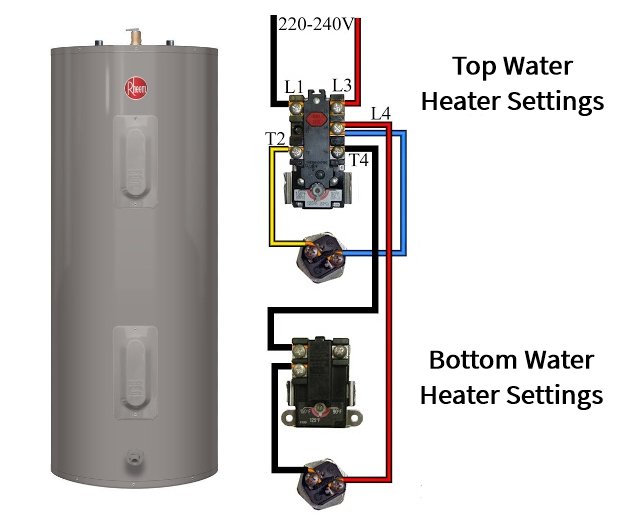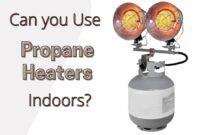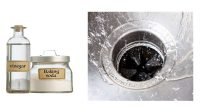Are you looking for a guide that shows you how to adjust water heater settings top and bottom properly? Although top and bottom elements are more prevalent in electric water heaters, the following article will walk you through the temperature settings guide for gas and electric units.
Hot Water Heater Settings Top and Bottom Which Higher?
Finding the correct settings for your water heater is essential for safety and efficiency. If the water is too hot, it can cause burns or scalds; if it’s too cold, it can become a breeding ground for bacteria.
For gas-fired water heaters, adjusting the temperature is straightforward due to a dial at the bottom of the tank. Turn the dial to adjust the temperature and check after a few hours to see if the desired setting is reached.

The process involves adjusting the thermostats, typically found under control panels for electric water heaters. Here’s a step-by-step guide to adjusting the settings:
- Turn Off the Power: Switch off the water heater at the circuit breaker.
- Locate the Thermostats: Use a screwdriver to access the control panels and locate the thermostats.
- Adjust the Temperature: Ensure both thermostats are set to the same temperature.
- Reassemble and Power On: Replace the control panels and turn the power back on.
- Check the Temperature: After a few hours, check if the temperature is set correctly.
Personal Experience: Setting Electric Water Heater Thermostats
Having worked with electric water heaters, I’ve found that the key to efficient performance is ensuring the upper and lower thermostats are set to the same temperature. This prevents the heater from overworking and maintains a consistent water temperature.
A helpful tip
“If your water heater’s thermostats are set to different temperatures, the heater may work inefficiently, leading to fluctuating water temperatures and increased energy consumption.”
Additional Insights
From Expert Discussions:
- Temperature Consistency: The general consensus among experts is to set the top and bottom thermostats to the same temperature. This promotes efficiency and extends the life of the water heater. However, some suggest setting the top thermostat slightly higher for quicker hot water recovery, especially in older models.
- Thermostat Functions: The upper thermostat is the primary controller and dictates the operation of the lower thermostat. When hot water is drawn, the lower thermostat first senses the temperature drop and activates the lower heating element. If the water in the upper tank cools down, the upper thermostat takes over, ensuring a continuous hot water supply.
Temperature Settings and Their Implications
| Setting | Implication | Recommendation |
|---|---|---|
| 120°F | Prevents scalding, reduces energy consumption, safe | Recommended by DOE |
| 140°F | Default setting, increased scald risk, higher energy use | Adjust to 120°F |
| Below 120°F | Increased risk of bacterial growth | Not recommended |
Are Upper and Lower Water Heater Elements the Same?
The top and bottom heating elements of your electric water heater are identical. The high-limit device and the thermostat regulate their temperature. They typically measure 12 inches (300 mm), but different models may have different sizes.
Read also: How to Replace Water Heater Element without Draining
The electric heating elements are critical right after the tank because you won’t have hot water if the elements are broken. Knowing the right way to set water heater settings on top and bottom can be crucial to ensuring the durability of your unit according to its intended lifespan.


